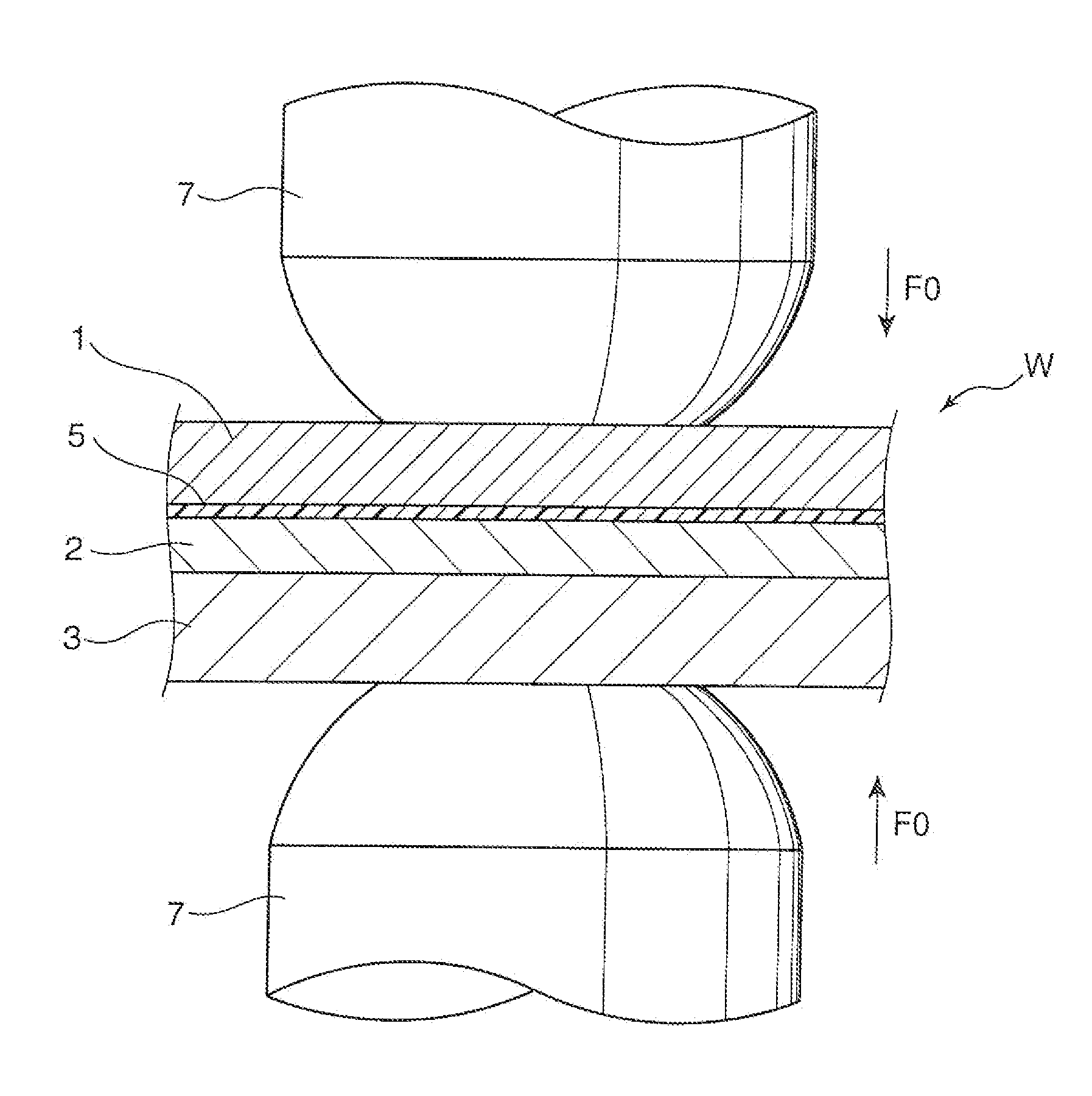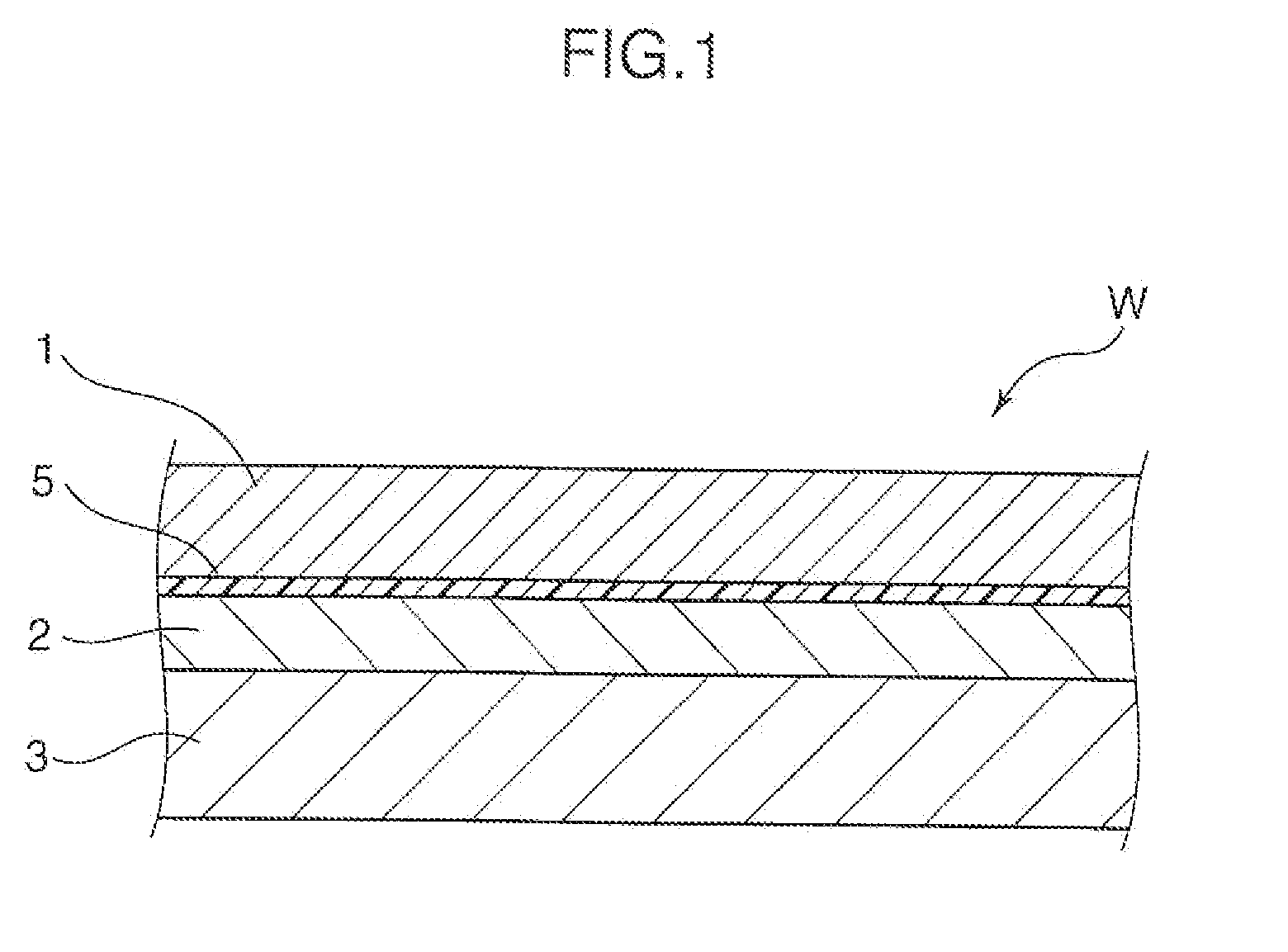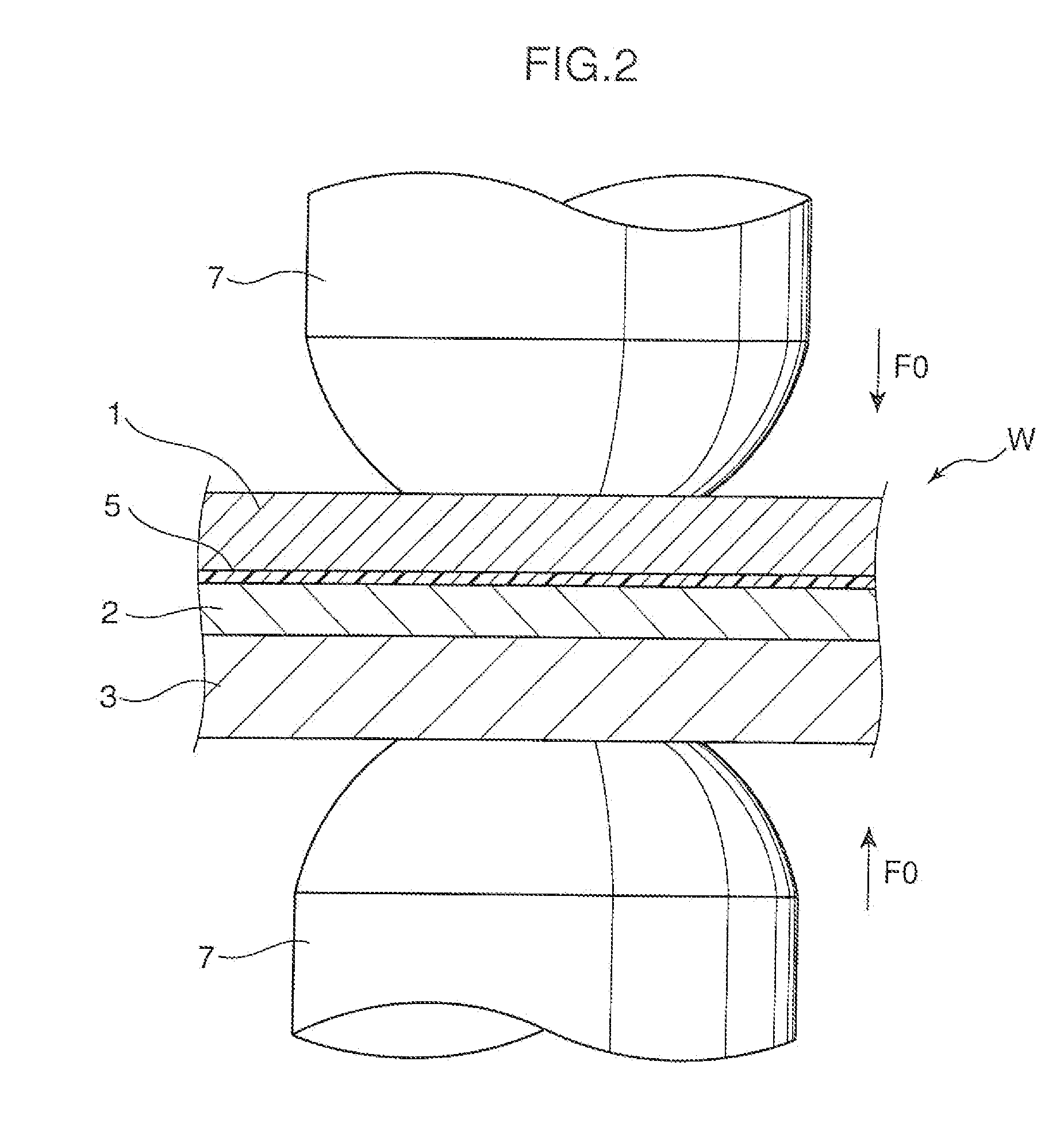Joining method of dissimilar metal plates and dissimilar metal joined body
a technology of metal plates and metal joints, which is applied in the field of joining methods of dissimilar metal plates and dissimilar metal joints, can solve the problems of insufficient welding current, inability to increase the welding current sufficiently, and inability to obtain sufficient joint strength, etc., and achieve the effect of improving joint strength
- Summary
- Abstract
- Description
- Claims
- Application Information
AI Technical Summary
Benefits of technology
Problems solved by technology
Method used
Image
Examples
example 1
[0074]The joining conditions of Example 1 are as shown in FIG. 10 and FIG. 11. In other words, in Example 1, foremost, as the pre-pressurization step, a pressing force of 2 kN is applied for 60 cyc (1000 msec). Subsequently, as the pre-heating step, while continuing the pressurization at 2 kN, a current of 2 kA is applied for 15 cyc (250 msec). Subsequently, as the cooling step, a pressing force of 7 kN is applied for 60 cyc (1000 msec) in a state where the conduction is stopped. Finally, as the welding step, while continuing the pressurization at 7 kN, a current of 14 kA is applied for 18 cyc (300 msec). Note that, in this Example, the type 1 electrode (FIG. 8A) was used as the electrode 7 on the aluminum side (side to come in contact with the aluminum alloy plate 1), and the type 1 electrode was also used as the electrode 7 on the steel plate side (side to come in contact with the non-plated steel plate 3).
example 2
[0075]In Example 2, foremost, as the pre-pressurization step, a pressing force of 2 kN is applied for 60 cyc (1000 msec). Subsequently, as the pre-heating step, a current of 2 kA is applied for 15 cyc (250 msec). Here, while the pressing force is set to 2 kN for 10 cyc (167 msec) from the start of the pre-heating step, the pressing force is set to 7 kN for the subsequent 5 cyc (83 msec). Subsequently, as the cooling step, a pressing force of 7 kN is applied for 60 cyc (1000 msec) in a state where the conduction is stopped. Finally, as the welding step, while continuing the pressing force of 7 kN, a current of 14 kA is applied for 18 cyc (300 msec). Note that the electrode 7 that is used in this Example is the type 1 electrode (FIG. 8A) for both the aluminum side and the steel plate side.
example 3
[0076]With respect to the joining conditions of Example 3, although the timing of pressurization and conduction is the same as Example 1, what is different from Example 1 is that the pressing force during the cooling step and the welding step is set to 5 kN, and the conduction current during the welding step is set to 13 kA. Note that the electrode 7 that is used in this Example is the type 1 electrode (FIG. 8A) for both the aluminum side and the steel plate side.
PUM
| Property | Measurement | Unit |
|---|---|---|
| thickness | aaaaa | aaaaa |
| thickness | aaaaa | aaaaa |
| current | aaaaa | aaaaa |
Abstract
Description
Claims
Application Information
 Login to View More
Login to View More - R&D
- Intellectual Property
- Life Sciences
- Materials
- Tech Scout
- Unparalleled Data Quality
- Higher Quality Content
- 60% Fewer Hallucinations
Browse by: Latest US Patents, China's latest patents, Technical Efficacy Thesaurus, Application Domain, Technology Topic, Popular Technical Reports.
© 2025 PatSnap. All rights reserved.Legal|Privacy policy|Modern Slavery Act Transparency Statement|Sitemap|About US| Contact US: help@patsnap.com



